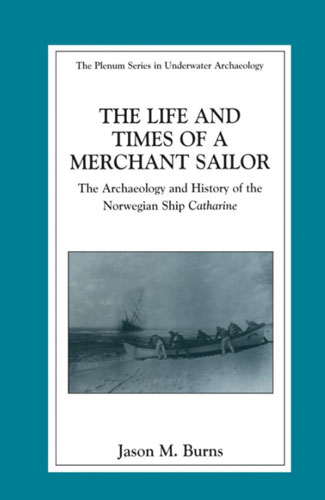The Life and Times of a Merchant Sailor. The Archaeology and History of the Norwegian Ship Catharine
Издание на английском языке
The remains of the Norwegian ship Catharine were archaeologically documented during the summer of 1998 in the Gulf of Mexico, of Pensacola Beach, Florida. After beginning the study of Catharine, I began to realize that the shipwreck was only one link in a chain of events that connected a single site to local, regional, and transatlantic history. Originally christened as Eliza in 1870, the ship sailed from its building site in St. John, New Brunswick, to Liverpool, England, where she was quickly sold to British owners and renamed Carnarvonshire. Documents indicate that the ship served 20 years in the British Merchant Marine and was eventually sold to Norwegian owners, who she served for four years.
Contents
Introduction
1. The Life and Times of a Merchant Sailor
1.1 Canadian Shipbuilding
1.2 The Eliza
1.3 Liverpool and British Ownership
1.4 Tramp Shipping
1.5 Carnarvonshire's Last Voyage
2. Norwegian Shipping
2.1 Norwegian Sailors
2.2 Norwegian Ships
2.3 Cross Trading
2.4 Catharine in Norway
2.5 Norwegian Timber Specialization
3. Pensacola and Norwegian Ships and Shipping
3.1 Norwegian Emigration and Pensacola
3.2 Pensacola's "Little Norway"
3.3 The Norwegian Seaman's Church
3.4 Catharine Attempts to Make the Pass
4. Archaeological Investigations of Catharine
4.1 Previous Archaeological Research and Modem Salvage
4.2 Site Geomorphology
4.3 Archaeological Methodology
4.4 Ship's Architecture
4.4.1 Keel
4.4.2 Frames
4.4.3 Keelson
4.4.4 Hull Planking
4.4.5 Sheathing
4.4.6 Ceiling Planking
4.4.7 Iron Riders
4.4.8 Iron Knees
4.5 Ship's Rigging
4.5.1 Mast Shrouds/Wire Rope
4.6 Anchor Chain
4.7 Iron Bollards
4.8 Associated Debris Field
4.9 The Ballast Pile
5. Catharine's Artifact Assemblage
5.1 Fasteners
5.2 Ship's Hardware
5.3 Deck Lights/Deck Glasses
5.4 Hull Sheathing
5.5 Ship's Rigging
5.6 The Ceramics and Glass Assemblage
5.7 Miscellaneous/Small Finds
6. Summary and Conclusions
Appendix A: Vessel Voyage Summary
Appendix B: Catalog and Conservation of Artifacts
Appendix C: Wood Species Identification
References
Glossary
Index




